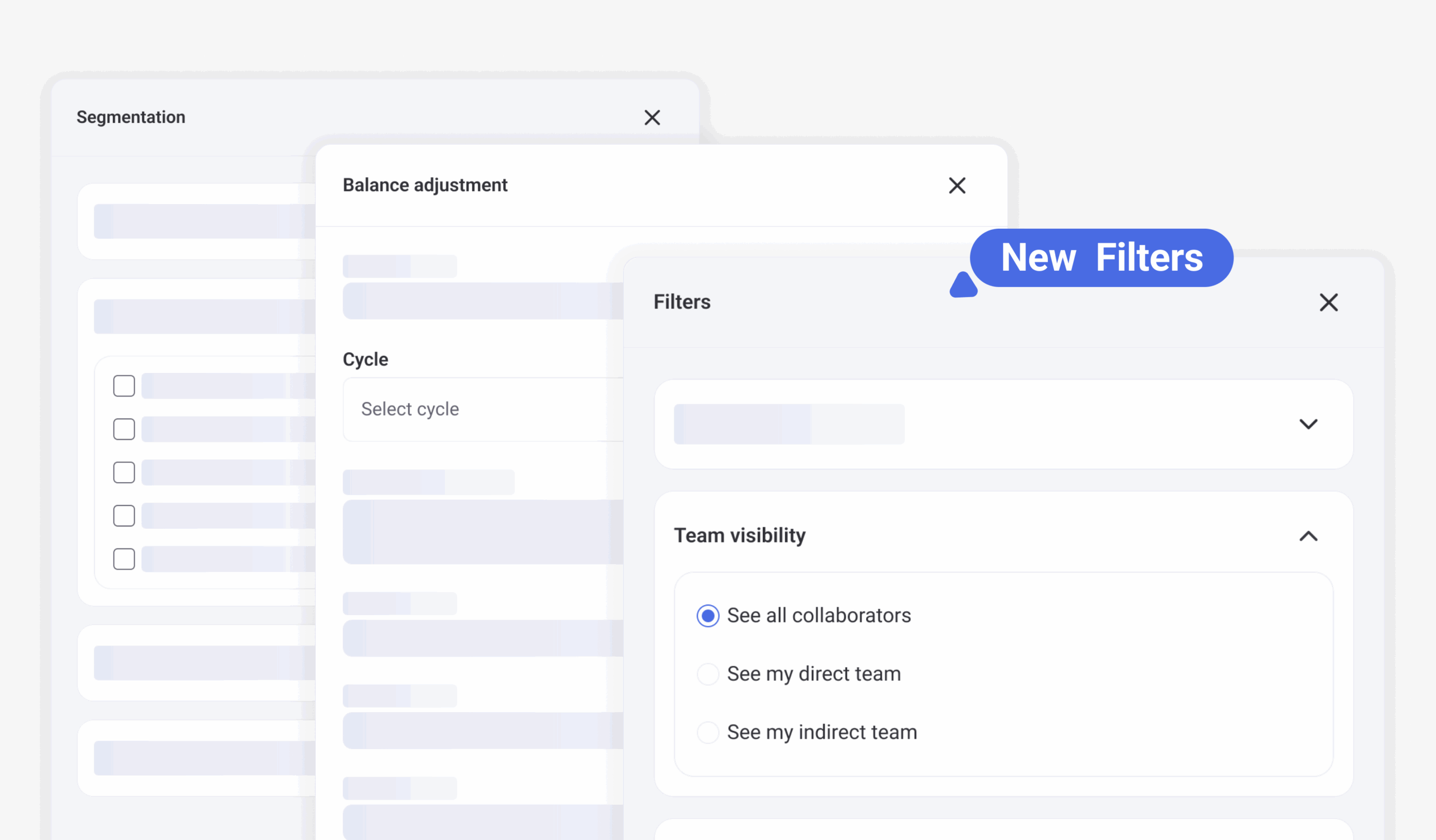Introduction
In today’s fast-paced and competitive business environment, understanding the pivotal role of Human Resources (HR) is essential for organizational success. HR is not just about hiring and firing; it’s about creating a work environment that fosters growth, innovation, and employee satisfaction. But what does HR stand for, and why is it so critical for businesses of all sizes?
In this article, we’ll delve into the core roles and functions of HR, shedding light on its significance and impact. As we explore what HR truly means, we’ll also showcase how Humand, an all-in-one app for people management, company culture, and internal communication, can streamline and enhance your HR practices. Whether you’re a small business owner or a seasoned HR professional, this guide will provide valuable insights into the world of Human Resources.
What Does HR Stand For?
Definition of HR (Human Resources)
HR, short for Human Resources, is a department within an organization responsible for managing all aspects related to its employees. This includes everything from recruitment and hiring to employee relations, training, and development. The term “Human Resources” itself underscores the importance of people as valuable assets within a company, much like financial or physical resources.
Role in Organizations: HR Explanation
HR plays a multifaceted role in organizations, acting as the bridge between the company’s strategic goals and the needs of its workforce. Here are some of the key responsibilities of HR:
Recruitment and Hiring: Identifying talent needs, sourcing candidates, conducting interviews, and onboarding new employees.
Employee Relations: Fostering a positive work environment, resolving conflicts, and ensuring open communication channels.
Training and Development: Providing opportunities for professional growth and skill enhancement through various training programs and workshops.
Compensation and Benefits: Designing and managing employee compensation packages, benefits, and incentives.
Compliance and Legal Issues: Ensuring the organization adheres to labor laws, workplace regulations, and employment standards.
Importance of HR in Business Success
The importance of HR in business success cannot be overstated. Effective HR management leads to:
Enhanced Productivity: By recruiting the right talent and providing continuous training, HR ensures that employees are equipped to perform at their best.
Improved Employee Satisfaction: HR initiatives that focus on employee well-being, recognition, and career development foster a positive work environment, leading to higher job satisfaction and retention rates.
Legal Compliance: HR’s role in maintaining compliance with labor laws and regulations protects the organization from legal issues and financial penalties.
Strategic Alignment: HR helps align the workforce with the company’s strategic objectives, ensuring that all employees work towards common goals.
Cultural Development: HR plays a crucial role in shaping and nurturing the company culture, which is essential for creating a cohesive and motivated workforce.
In essence, HR is the backbone of any successful organization, ensuring that the most valuable resource – its people – are well-managed, motivated, and aligned with the company’s vision and goals. As we move forward, we will explore the specific functions and responsibilities of HR in greater detail, highlighting how they contribute to overall business success.
The Evolution and Core Functions of HR
Historical Context and Evolution of HR
The role of Human Resources has transformed dramatically over the past century. Initially emerging in the early 20th century as a response to the need for more structured workforce management, HR was primarily concerned with administrative tasks and labor relations. Over time, as businesses recognized the critical importance of their workforce in achieving strategic goals, HR evolved into a multifaceted discipline. Today, it encompasses not only administrative duties but also strategic functions aimed at fostering a thriving, productive, and engaged workforce.
Key Functions and Responsibilities of Modern HR
Modern HR is a dynamic and strategic partner within an organization, responsible for a wide array of functions that are crucial for business success. Here’s a closer look at the core responsibilities:
Recruitment and Staffing:
Identifying Talent Needs: Collaborating with department leaders to pinpoint staffing requirements and develop precise job descriptions.
Talent Acquisition: Utilizing diverse recruitment channels—such as online job boards, social networks, and recruitment firms—to attract qualified candidates.
Selection Process: Organizing and conducting interviews, assessments, and background checks to select the best candidates.
Onboarding: Creating comprehensive onboarding programs to ensure new hires integrate smoothly into the company culture and operations.
Employee Relations:
Conflict Resolution: Mediating disputes and fostering a positive and inclusive work environment.
Employee Engagement: Implementing initiatives to boost morale, satisfaction, and retention through recognition programs, surveys, and feedback mechanisms.
Communication: Establishing effective communication channels between employees and management to ensure transparency and address concerns promptly.
Training and Development:
Professional Growth: Offering training programs, workshops, and courses to enhance employees’ skills and career prospects.
Career Pathing: Facilitating career development opportunities and succession planning to prepare employees for future leadership roles.
Performance Management: Conducting regular performance reviews and appraisals to provide constructive feedback and identify areas for improvement.
Compensation and Benefits:
Salary Administration: Developing competitive compensation strategies to attract and retain top talent.
Benefits Management: Overseeing health insurance, retirement plans, and other employee benefits to ensure comprehensive coverage and satisfaction.
Incentive Programs: Creating reward systems that recognize and incentivize exceptional performance and contributions.
Compliance and Legal Issues:
Regulatory Compliance: Ensuring adherence to labor laws, employment standards, and industry regulations to mitigate legal risks.
Policy Development: Crafting and enforcing workplace policies that promote fairness, equality, and safety.
Health and Safety: Managing occupational health and safety programs to create a secure working environment.
HR’s diverse functions are essential to the holistic management of an organization’s human capital. By effectively balancing administrative duties with strategic initiatives, HR professionals help create a robust framework that supports both individual and organizational growth.
In the next section, we’ll explore the deeper implications of HR’s role, focusing on how it influences company culture and the overall work environment.
HR Meaning and Importance
HR’s Impact on Company Culture
Company culture is the collective values, beliefs, and behaviors that shape the social and psychological environment of a business. HR plays a crucial role in defining, nurturing, and evolving this culture. By establishing and promoting core values, HR ensures that employees understand and embrace the organizational ethos. This alignment helps create a cohesive and motivated workforce.
HR influences company culture in several ways:
Recruitment: Hiring individuals who not only have the right skills but also fit well with the company’s values and culture.
Onboarding: Introducing new hires to the company culture from day one, ensuring they feel connected and aligned with the organization’s mission.
Employee Engagement: Creating initiatives that reinforce the company culture, such as team-building activities, recognition programs, and corporate social responsibility projects.
The Role of HR in Fostering a Positive Work Environment
A positive work environment is essential for employee satisfaction, productivity, and retention. HR is pivotal in creating and maintaining such an environment by:
Establishing Clear Communication Channels: Ensuring that there is open and transparent communication between employees and management. This helps in building trust and addressing issues promptly.
Promoting Work-Life Balance: Implementing policies that support flexible working hours, remote work options, and other initiatives that help employees balance their professional and personal lives.
Ensuring Fair Treatment: Developing and enforcing policies that promote fairness, equity, and inclusion in the workplace. This includes anti-discrimination policies, diversity training, and equal opportunity initiatives.
Supporting Employee Well-being: Providing resources and programs that support physical and mental health, such as wellness programs, counseling services, and health benefits.
Examples of Effective HR Practices
Effective HR practices are those that contribute significantly to the overall well-being and productivity of employees while aligning with the company’s strategic goals. Here are some examples:
Comprehensive Onboarding Programs: Companies like Google have detailed onboarding processes that ensure new employees understand their roles, the company culture, and how they can contribute from day one.
Continuous Learning and Development: Adobe offers a wide range of learning opportunities through its “Learning Fund” program, which reimburses employees for educational expenses and encourages continuous skill development.
Employee Recognition Programs: Zappos is known for its employee recognition programs, which include peer-to-peer bonuses and public acknowledgments, fostering a culture of appreciation and motivation.
Flexible Work Policies: Microsoft has embraced flexible work arrangements, allowing employees to work remotely and set their own schedules, leading to increased job satisfaction and productivity.
Diversity and Inclusion Initiatives: Salesforce actively promotes diversity and inclusion through its “Equality Group” programs, which provide support and advocacy for underrepresented groups within the company.
HR’s efforts in shaping company culture, fostering a positive work environment, and implementing effective practices are fundamental to building a successful and sustainable organization. These initiatives not only enhance employee satisfaction and retention but also contribute to the overall success and competitiveness of the business.
In the following section, we will delve into the day-to-day activities of HR professionals and how they strategically manage the employee lifecycle.
Human Resources Examples
Understanding the theory behind HR is one thing, but seeing it in action truly highlights its importance. Here, we will explore real-world examples of successful HR practices from various industries and demonstrate how Humand can support and enhance these efforts.
Case Studies of Successful HR Strategies
– Google: Fostering Innovation Through Culture and Perks
Google is renowned for its unique and innovative company culture, which HR plays a crucial role in shaping. By offering creative workspaces, flexible work hours, and a plethora of employee perks such as free meals and wellness programs, Google ensures its employees are happy, healthy, and highly motivated. HR’s focus on maintaining a dynamic and inclusive culture has helped Google attract and retain top talent, fostering an environment where innovation thrives.
– Adobe: Continuous Feedback and Employee Development
Adobe’s “Check-In” program revolutionized performance management by eliminating annual performance reviews in favor of continuous feedback. This approach allows for regular, constructive conversations between employees and managers, focusing on growth and development rather than annual evaluations. Adobe’s HR team supports this program by training managers on effective feedback techniques and ensuring that development opportunities are available for all employees.
– Zappos: Employee Happiness and Customer Service Excellence
Zappos places a strong emphasis on employee happiness, believing that happy employees lead to excellent customer service. HR initiatives at Zappos include a robust onboarding process that immerses new hires in the company culture, as well as unique programs like “The Offer,” where new employees are offered money to quit if they feel the job isn’t right for them. This ensures that only truly committed individuals stay, enhancing overall job satisfaction and performance.
Frequently Asked Questions
What does HR stand for at a job?
HR stands for Human Resources—the heart of any organization. It’s the team responsible for managing people, shaping company culture, and driving employee success, from hiring and training to engagement and growth!
What does an HR do in a company?
An HR (Human Resources) professional ensures a company runs smoothly by managing its most valuable asset—its people. They handle recruitment, training, payroll, employee engagement, performance management, workplace culture, and compliance. Essentially, HR fosters a thriving workplace where both employees and the business succeed!
What do HR people do?
HR professionals handle everything related to a company’s people. They recruit top talent, manage onboarding, ensure fair pay and benefits, resolve workplace issues, foster company culture, and support employee growth. Simply put, they keep the team happy, productive, and aligned with company goals!
What actually HR means?
HR means for Human Resources, and it refers to the department or professionals dedicated to managing a company’s workforce. It’s all about recruiting, developing, and supporting employees while fostering a positive work environment to help both the business and its people thrive!
How Humand Supports Effective HR Management
Humand, an HR software for people management, company culture, and internal communication, provides tools and features that can support and enhance the successful HR practices seen in these case studies:
Culture Building Tools: Humand offers features to promote a positive and inclusive company culture. This includes platforms for employee recognition, social engagement tools, and resources for team-building activities, helping to create an environment similar to Google’s innovative culture.
Performance Management System: With Humand’s continuous feedback and performance tracking capabilities, companies can implement a system like Adobe’s “Check-In” program. This tool allows for regular feedback, goal setting, and progress tracking, ensuring employees receive the support they need for ongoing development.
Onboarding and Employee Engagement: Humand streamlines the onboarding process with customized onboarding plans, interactive training modules, and comprehensive welcome packages. This ensures new hires are well-integrated and aligned with the company culture from day one.
By leveraging Humand, companies can implement and refine HR strategies that drive engagement, productivity, and retention. These examples illustrate the transformative impact of effective HR practices and how technology can support these initiatives.
In conclusion, HR is a vital component of any organization, playing a critical role in shaping company culture, fostering a positive work environment, and driving overall business success. So, what does HR mean for your organization? It means investing in robust systems like Humand to enhance these efforts, ensuring your company remains competitive and attractive to top talent.







